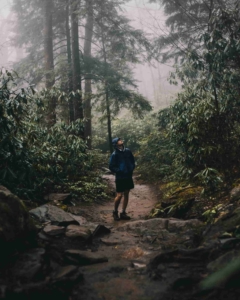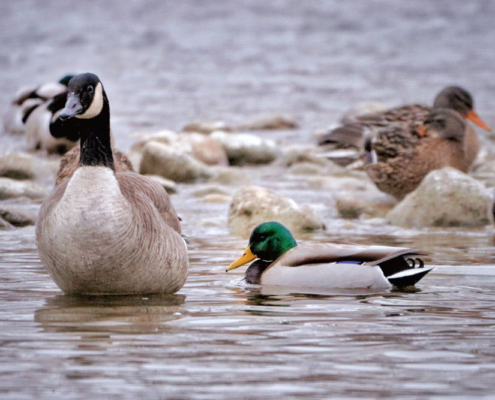What Does “Leave No Trace” Mean?
Leave No Trace: Preserving Nature for Generations to Come
As outdoor enthusiasts, adventurers, and nature lovers, we are blessed to explore and immerse ourselves in the beauty of the great outdoors. However, with “great power comes great responsibility” (anyone recognize that quote?)—a responsibility to protect and preserve these natural spaces for future generations. This is where the principle of “Leave No Trace” comes into play.
Leave No Trace is not merely a set of rules; it’s a philosophy that guides our actions, encouraging us to minimize our impact on the environment while enjoying the outdoors. Whether you’re embarking on a day hike, camping trip, or a multi-day backpacking adventure, adhering to Leave No Trace is essential for maintaining our natural spaces.
1. Plan Ahead and Prepare
Before setting out on your outdoor excursion, take the time to research and plan your trip thoroughly. Familiarize yourself with the area’s regulations, weather conditions, and terrain. Consider factors such as group size, skill level, and equipment needs to ensure a safe and enjoyable experience. By adequately preparing, you reduce the likelihood of unexpected situations that could lead to environmental damage.
2. Travel and Camp in Established Areas
 When venturing into the wilderness, stick to established trails and campsites whenever possible. By confining your activities to durable surfaces like trails, rocks, or gravel, you minimize the impact on fragile ecosystems. Avoid trampling vegetation, especially in sensitive areas such as wetlands or alpine zones, where plant life takes years to recover from damage.
When venturing into the wilderness, stick to established trails and campsites whenever possible. By confining your activities to durable surfaces like trails, rocks, or gravel, you minimize the impact on fragile ecosystems. Avoid trampling vegetation, especially in sensitive areas such as wetlands or alpine zones, where plant life takes years to recover from damage.
- A friend and I were hiking to Memorial Lakes in Kananaskis and on the way back along the river, we ended up on along the wrong trail (and there are often many mini trails to and from the river from people and animals to access to the water). We needed to be farther north and the GPS said we were essentially running parallel with the main trail, so we opted to “hop” across instead of backtracking half a km. I now have a new appreciation for the forest floor. It was dense, deep, and hard to maneuver. It taught me an important lesson about designated trails and a new grasp on the eco systems in our forests that we likely disrupted that day!
3. Dispose of Waste Properly
One of the fundamental principles of Leave No Trace is to pack out everything you pack in. This includes not only your trash but also food scraps, hygiene products, and even biodegradable items like fruit peels. Carry a sturdy (I prefer sealable as well) trash bag and make sure to properly dispose of waste in designated receptacles or pack it out with you. Human waste should be buried at least 6 to 8 inches deep and at least 200 feet away from water sources.
4. Leave What You Find
- Ecological Balance: Natural objects, whether they are rocks, plants, or artifacts, play vital roles in maintaining the ecological balance of an area. Disturbing or removing these objects can disrupt ecosystems.
- Habitat Protection: Many natural objects serve as habitats for various organisms. For example, fallen logs provide shelter for insects, small mammals, and fungi, while rocks and crevices offer nesting sites for birds and reptiles.
- Cultural Preservation: In addition to natural features, outdoor areas may also contain cultural artifacts and historical sites that hold significance for indigenous communities or have archaeological value.
- Aesthetic Enjoyment: One of the greatest joys of exploring the outdoors is encountering its natural beauty in its purest form.
- Scientific Study: Natural objects and features provide valuable opportunities for scientific study and research. They offer insights into geological processes, plant and animal behavior, and environmental changes over time.
- Ethical Considerations: Ultimately, leaving what we find is a matter of ethical responsibility and respect for the environment. Just as we wouldn’t vandalize a work of art in a museum, we should refrain from altering or removing elements of the natural world.
5. Minimize Campfire Impacts
While campfires can be an enjoyable part of the outdoor experience, they also pose a risk to the environment if not managed properly. When building a fire, use established fire rings or fire pits whenever possible. Keep fires small and only use dead and downed wood for fuel. Make sure to completely extinguish the fire before leaving by dousing it with water and stirring the ashes until cold to the touch.
6. Respect Wildlife
Wild animals are an integral part of the natural world and should be observed from a safe distance. Avoid feeding, approaching, or disturbing wildlife, as this can disrupt their natural behaviors and cause harm to both animals and humans. Keep food and scented items securely stored to prevent attracting wildlife to your campsite. Bear bags for storage, or freeze dried single serving meals to avoid excess scent that may attract wildlife.
Don’t feed us!
7. Be Considerate of Other Visitors
Finally, practice good outdoor etiquette by being considerate of other visitors and minimizing noise pollution.
- Respect the tranquility of the wilderness by keeping noise to a minimum, especially in areas where others are seeking solitude or quiet enjoyment.
- When encountering other hikers or trail users, yield the right of way and step aside to let them pass, especially on narrow or steep sections of the trail.
- When taking breaks or enjoying scenic viewpoints, be mindful of where you place your belongings.
- If hiking or camping with pets, keep them leashed and under control at all times to prevent them from disturbing wildlife, other visitors, or sensitive ecosystems.
- Properly dispose of trash, including food wrappers, containers, and hygiene products, by packing them out with you and disposing of them in designated receptacles.
- Respect the privacy of other visitors by refraining from intruding on their personal space – “read the room”
- If hiking or camping with a group, be cautious of group mentality and maintain respectful behaviors
- Share Leave No Trace principles and outdoor etiquette with fellow visitors to promote responsible outdoor recreation and stewardship of natural resources.
In conclusion, Leave No Trace is not just a set of guidelines; it’s a commitment to preserving the natural beauty of our planet for generations to come. By following these principles and encouraging others to do the same, we can ensure that our outdoor adventures leave only footprints and memories, leaving the wilderness pristine and unspoiled for future explorers to enjoy. So, the next time you head out into nature, remember to leave no trace and leave it better than you found it!







